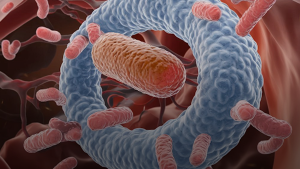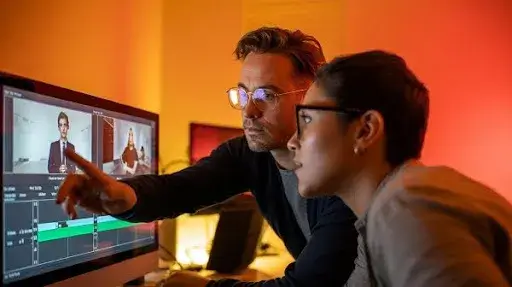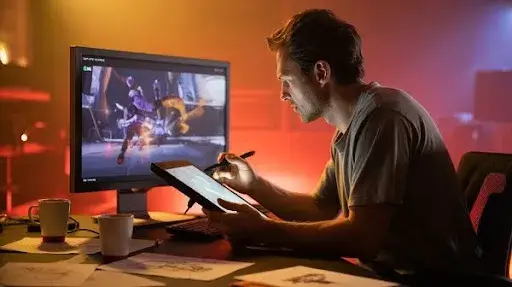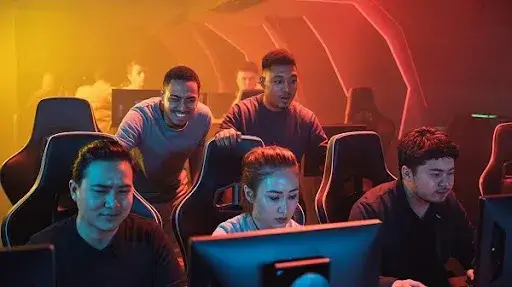Medical animation is a very potent tool that can bring accessibility to complex medical ideas and concepts for both patients and healthcare workers. In the same way animations aid learning in other sectors, such as education and marketing, medical animation utilizes storytelling to convey information related to human anatomy, disease processes, and treatments, making them easier to understand. That is why there has been a reported increase of 30% since 2018 in the adoption of animation services within the healthcare sector.
This amalgamation of art and science makes use of a variety of techniques, such as 3D character animations, in order to illustrate complex medical concepts in an entertaining way. In this blog post, we will look at the impact and applications of medical animations with an emphasis on the future of 2D medical animations.
Enhancing Patient Education
Inpatient education and medical animation represent one of the primary applications. The ability to visualize certain medical methods, anatomical actions, and approaches to therapy enhances information retention and allows them as decision-makers to take responsibility for their health. By weaving engaging storytelling into these animations, complex medical concepts become even more relatable and easier to grasp.
Medical Training and Education
Medical professionals benefit immensely from medical animation in training scenarios. This serves as a platform to master surgical skills, anatomical parts, and other medical procedures using realistic and comprehensive animations. With the continued advancement of technology, there is a paradigm shift toward more active learning with medical animations that will transform training practice in 2025. This is noted in the demonstration of complicated medical instruments using 3D product animated videos that facilitate easier comprehension and operation of these devices.
Illustrating Disease Mechanisms
It is important for both medical experts and patients to grasp the root causes of illnesses. Animation in medicine can vividly and superficially depict a disease’s inner workings, deepening the understanding of its progression and treatment. This makes animation especially helpful in depicting intricate medical procedures for patients and practitioners, as it enhances their understanding of how treatments are done.
Surgical Planning and Simulation
In surgery, where accuracy is vital, this is even more valuable. Medical specialty animators prepare surgeons by allowing them to computer rehearse operations. This practice minimizes risk factors and optimizes outcomes while increasing the trust of the surgical teams.
Visualizing Drug Actions
Medical animatics are essential in depicting the body’s reactions to drugs on the cellular and molecular scale. By merging intricate science with visual art, it showcases how these animations effectively communicate pharmaceutical innovation, particularly in marketing. This helps explain some of the hardest concepts in drug construction and prescribing like pharmacokinetics and pharmacodynamics.
Bridging Language and Cultural Barriers
Medical animation is universal. Whether used in patient education or e-learning, these visuals make complex medical concepts easier to grasp. Medical information can be understood by anyone, regardless of language or culture. This is because medical animation removes the need for writing and speech, creating a universal visual code.
Engaging Healthcare Marketing and Communication
Medical animation is arguably one of the most important innovations in the health sector marketing industry because it offers a solution to the problem of short attention spans by effortlessly grabbing users’ attention while presenting concise, engaging, and comprehensive details. With cutting-edge animation techniques, these visuals create a dynamic learning experience that enhances understanding and retention.
Future Trends in 2D Animation for Medical Illustrations
While medical animatics are mostly done in 3D, the advancement of technology makes the future of 2D animation significantly exciting. A few years down the line, 2D will be widely accepted as a cheap and sophisticated substitute for medical documentation.
Augmented Reality (AR) and Virtual Reality (VR) in Medical Animation
The combination of AR and VR technologies expands the possibilities of medical animation in an unprecedented way. These technologies provide unprecedented opportunities for interactive learning, patient education, and surgical simulation.
Ethical Considerations in Medical Animation
The rise of medical animation heightens the need for proper ethical guidelines. The primary considerations for trust in medical professionals are proper accuracy, no sensationalism, and appropriate consent.
Collaboration between Animators and Healthcare Professionals
The collaboration between animators and professionals in the field of medicine is of utmost importance when the right and clear medical animation is being done. Such collaboration makes sure that the animation fully captures the essence of the content in medicine.
Impact on Patient Outcomes
It has been demonstrated that medical animation positively impacts patient understanding, lowers anxiety levels, and increases treatment plan compliance.
Accessibility and Inclusivity in Medical Animation
All people, including those with significant disabilities, should have access to medical animations. These types of animations need to be provided with other forms, such as audio narration or subtitles, for a broader audience reach. When used effectively, educational animations can make complex medical concepts more accessible and easier to grasp for diverse learners.
Conclusion
Nowadays, Healthcare workers have embraced medical animation to illustrate and simplify some components of the healthcare services offered to patients. Indubitably, these types of services are essential for educating prospective patients, training medical students, and marketing health services and products. With the rapid developments in technology, the prospects of medical animation seem limitless.
For the best medical animation in Los Angeles, contact the leading animation studios in LA for your next project.








